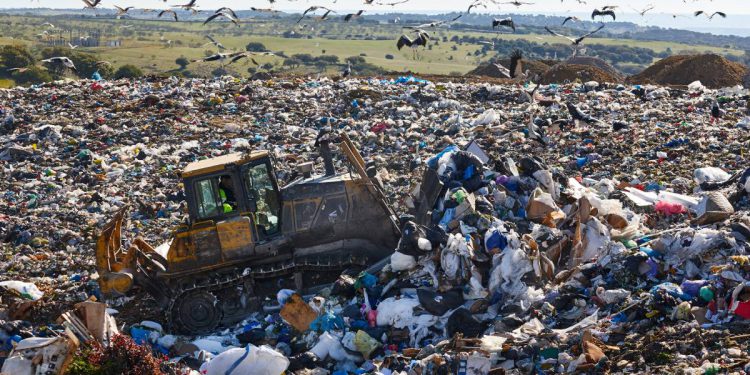Fast fashion is a term used to describe the rapid production of inexpensive clothing that follows the latest trends. Brands like Zara, H&M, and Shein have built massive global empires by churning out new designs at an astonishing pace, making fashion more affordable and accessible than ever before.
However, behind the low prices and stylish outfits lies a deeply troubling reality. Fast fashion is a major environmental, ethical, and economic problem that contributes to pollution, exploitative labour practices, and excessive waste.
Environmental Impact
1. Water Pollution and Overuse
One of the biggest environmental concerns of fast fashion is its impact on water resources. The fashion industry is the second-largest consumer of water globally. Producing just one cotton shirt requires approximately 2,700 litres of water—equivalent to what a person drinks in two and a half years.
Additionally, textile dyeing is responsible for 20% of global wastewater, contaminating rivers and oceans with toxic chemicals that harm aquatic life and human health.
2. Textile Waste and Landfill Overflow
Fast fashion encourages overconsumption by pushing consumers to buy cheap, trendy items that quickly go out of style. As a result, millions of tons of clothing end up in landfills each year. According to the Ellen MacArthur Foundation, the equivalent of one garbage truck full of textiles is dumped or burned every second. Most of these discarded clothes are made of synthetic fibres like polyester, which take hundreds of years to decompose, further exacerbating pollution.
3. Greenhouse Gas Emissions
The fast fashion industry is a major contributor to climate change. It is responsible for approximately 10% of global carbon emissions—more than international flights and maritime shipping combined. This is largely due to the energy-intensive processes involved in textile production, transportation, and disposal. Many fast fashion items are manufactured in countries reliant on coal-powered factories, significantly increasing their carbon footprint.
Ethical Issues
1. Exploitative Labor Practices
Fast fashion thrives on cheap labour, often exploiting workers in developing countries where wages are low and labour laws are weak. Many garment workers in Bangladesh, India, and China endure long hours in unsafe working conditions for meagre pay. The 2013 Rana Plaza disaster, which killed over 1,100 workers when a poorly constructed garment factory collapsed in Bangladesh, exposed the severe human cost of fast fashion.
2. Child and Forced Labor
Reports from organizations such as the International Labour Organization (ILO) and Human Rights Watch have documented cases of child labour in the textile industry. Children as young as five have been found working in sweatshops, deprived of education and forced to endure dangerous conditions. Additionally, some manufacturers have been linked to forced labour, particularly in regions where marginalized communities are exploited.
3. Lack of Transparency
Many fast fashion brands lack transparency regarding their supply chains, making it difficult to hold them accountable for unethical labour practices. While some companies claim to support fair wages and sustainable production, investigations often reveal discrepancies between their claims and actual practices. The lack of proper oversight allows brands to continue profiting from exploitative labour while maintaining a positive public image.
Economic and Social Consequences
1. Encouraging Overconsumption
Fast fashion’s business model is built on rapid turnover and the constant introduction of new trends. This encourages a culture of overconsumption, where people buy more than they need, often discarding clothes after a few wears. The cycle of constant purchasing not only harms the environment but also affects consumers’ financial well-being, leading to unnecessary spending and waste.
2. Threatening Traditional Craftsmanship
The rise of fast fashion has negatively impacted traditional artisans and small-scale textile producers. In many regions, handmade textiles and slow fashion industries struggle to compete with the low prices and mass production of fast fashion giants. This threatens cultural heritage and economic opportunities for skilled workers who rely on traditional craftsmanship.
3. Psychological Effects on Consumers
The relentless marketing strategies of fast fashion brands create pressure to keep up with ever-changing trends. This can lead to stress, dissatisfaction, and even compulsive shopping behaviours. The short-lived excitement of purchasing new clothing is often followed by guilt or disappointment when the items quickly lose their appeal or fall apart.
Solutions and Alternatives
1. Supporting Sustainable Fashion
One of the best ways to combat the negative effects of fast fashion is to support sustainable brands that prioritize ethical labour practices and environmentally friendly materials. Many emerging designers and companies focus on slow fashion, using organic fabrics, ethical production methods, and fair wages to create clothing that lasts longer.
2. Buying Second-Hand or Upcycling
Shopping at thrift stores, vintage shops, or online resale platforms is an excellent way to reduce waste and extend the life cycle of clothing. Upcycling—repurposing old clothes into new designs—also offers a creative and sustainable alternative to discarding garments.
3. Educating Consumers
Raising awareness about the consequences of fast fashion can help consumers make more informed choices. By understanding the environmental and ethical issues tied to cheap clothing, people can become more conscious of their purchasing habits and opt for more sustainable alternatives.
4. Implementing Stricter Regulations
Governments and international organizations must enforce stricter regulations on the fashion industry to ensure fair wages, safe working conditions, and environmental responsibility. Holding corporations accountable for their supply chains can drive meaningful change and reduce exploitation.
Conclusion
Fast fashion is a pressing global issue with severe environmental, ethical, and economic consequences. While it is difficult to completely escape fast fashion, what we can do is reduce the frequency of buying new clothes and be mindful of our consumption. Donating or repurposing old clothing for those in need can help minimize waste and reduce the amount of garments that end up in landfills.
By making small, conscious changes, we can contribute to a more sustainable fashion industry while still enjoying the clothes we wear.













